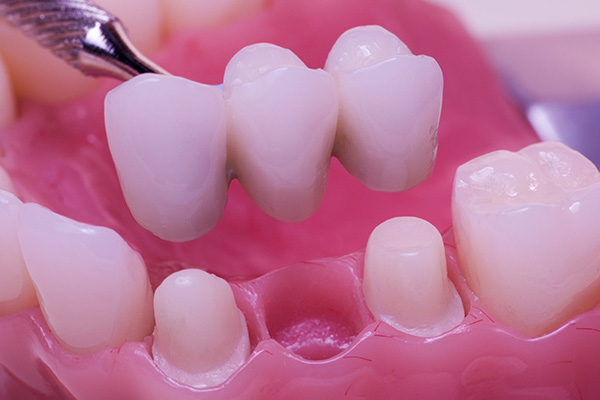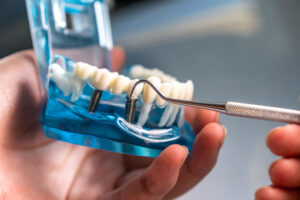Treatment Options for Peri-Implantitus

Peri-implantitus is one of the risks that come with dental implants. It is defined as an oral disease that leads to the inflammation of the bone and gum tissue surrounding an already fused dental implant. The result is often the loss of the bone structure that holds the implant in place.
Bone loss and peri-implantitus
Bone loss is sometimes associated with dental implants for a variety of reasons. It is something the patient is rarely even aware of. There are many reasons why a person who has an implant might suffer from bone loss. Fortunately, implants have a 95 percent success rate, so most people who get one rarely have to deal with such complications.
Peri-implantitus tends to progress with little pain, which is why most people suffering from it do not realize something is wrong until the disease is in the advanced stages of development. There are a variety of risk factors that can increase a person’s odds of getting this disease. Some of them include:
- Smoking or using other tobacco products which leads to a constriction of blood vessels.
- General health issues like diabetes, a poor immune system or osteoporosis. People who suffer from any of these diseases are more vulnerable to bone loss around implants.
- A previous history of gum disease.
- Bad habits like teeth grinding.
- A poorly-inserted implant.
- An oversized implant.
- A poorly-executed bone graft.
One of the most effective ways to keep peri-implantitus at bay is by practicing good oral hygiene. This includes brushing twice a day, flossing daily, and using an antibacterial mouthwash to prevent harmful bacteria species to a minimum.
Common signs of peri-implantitus:
- As mentioned above, most patients are not even aware they have this disease until it has progressed to an advanced stage. When this occurs, the patient will experience symptoms like:
- Deeper gum pockets.
- Pus coming out of the gum tissue surrounding the implant and the device itself.
- A bleeding gumline.
- The gums become reddish.
- There is noticeable bone tissue loss when an X-ray is performed.
- The metal portion of the implant becomes visible.
- Teeth begin to appear longer than normal.
- Tenderness around the implant.
- Weird taste in the mouth.
- Swollen neck glands.
Treating peri-implantitus
The goal of treating this disease is always to stop the bone tissue loss and maintain the integrity of the implant. The first thing the dentist will do is clean the area thoroughly removing any decayed or damaged material. Antibiotics and antibacterial medication can then be directly applied to the implant. Tetracycline and iodine are commonly used.
Depending on the severity of the case, it might also require bone grafting. That means the gums surrounding the implant have to be surgically opened and cleaned so that new bone tissue can be grafted to the implant.
The fact that an implant has failed once does not mean it cannot be repaired and restored. Patients should note that it is a lot easier to treat peri-implantitus during its early stages since the bone loss at that stage is negligible.
Noticing some of the symptoms listed above? Schedule a consultation with one of our dentists today!
Here’s what you need
For more information or to schedule an appointment with Preferred Dental Center, request an appointment in our San Antonio dental office here: https://www.preferreddentalcenter.com. Or call us at (210) 822-8500.



